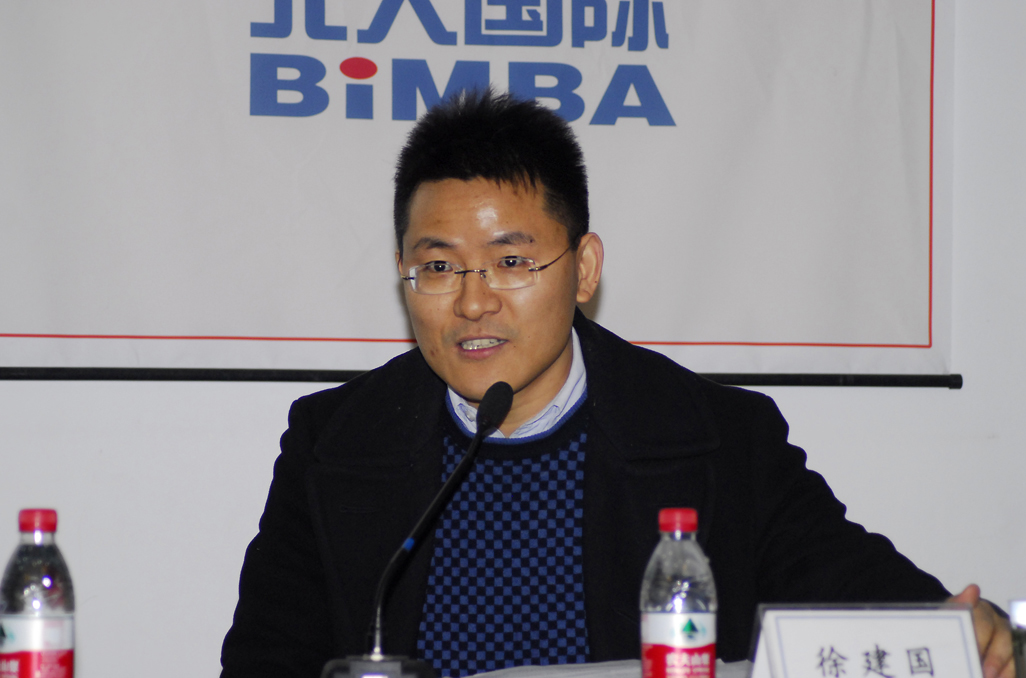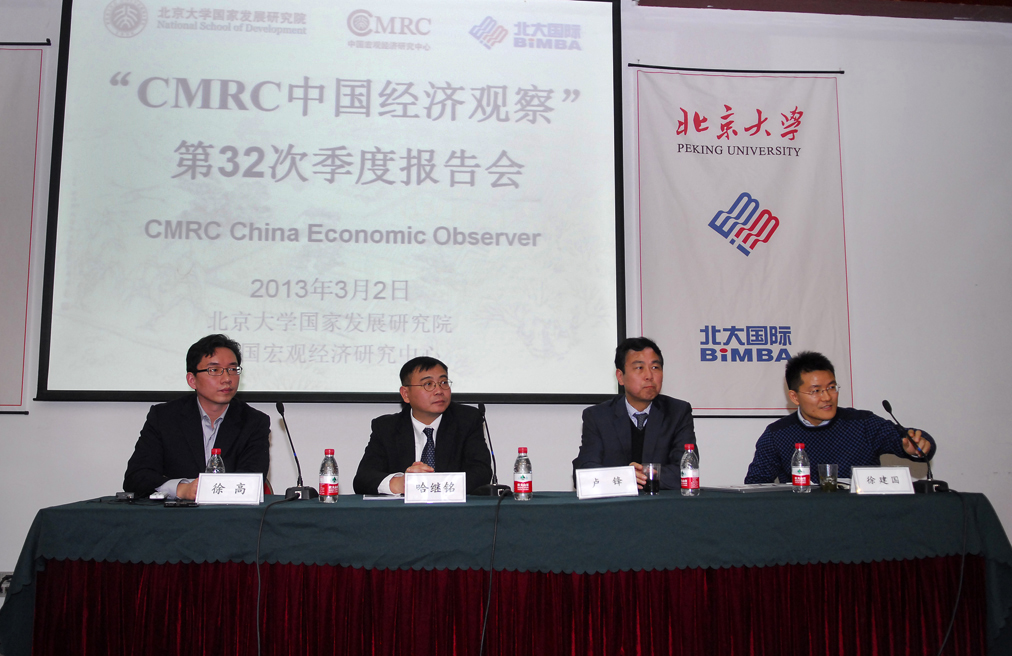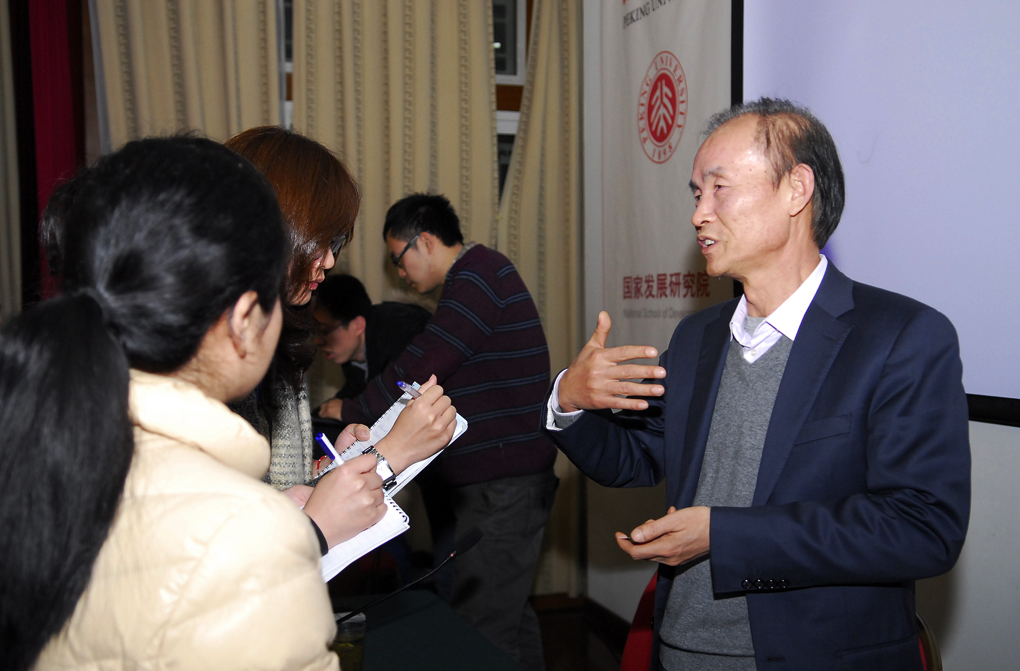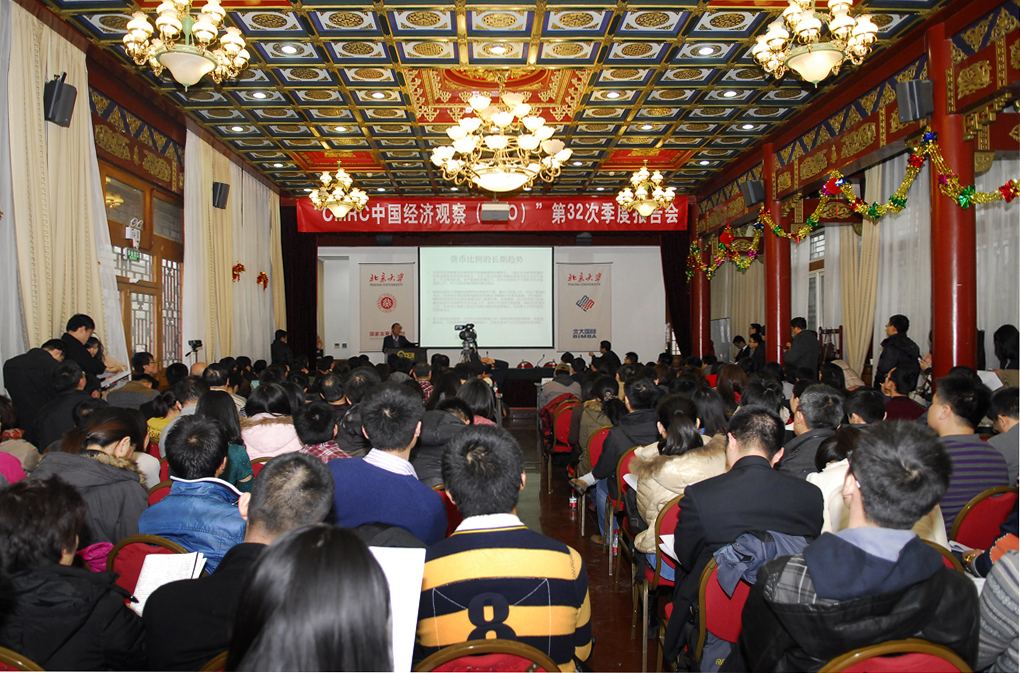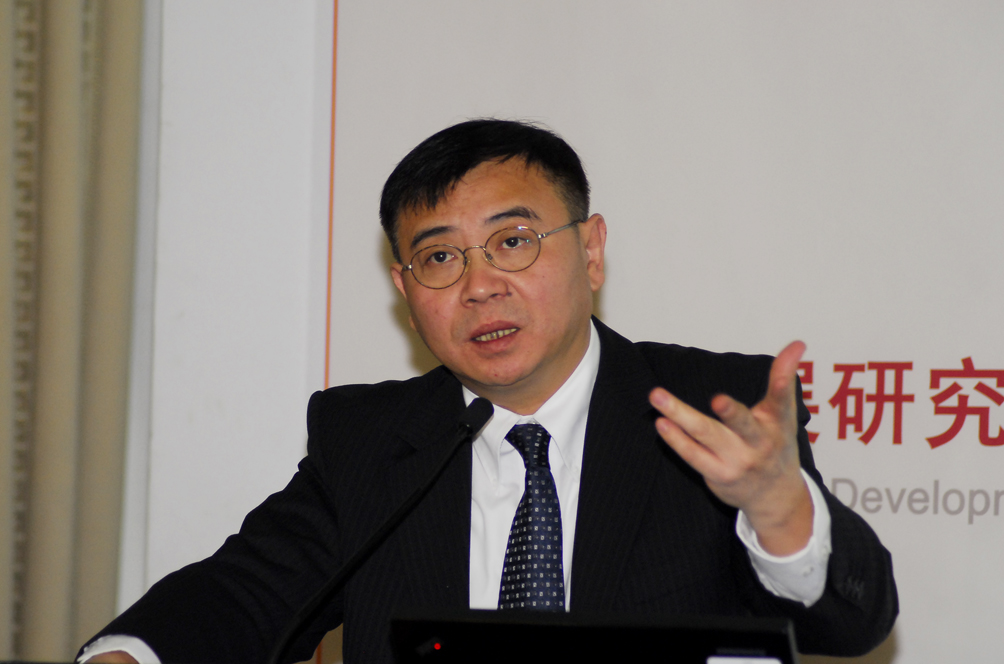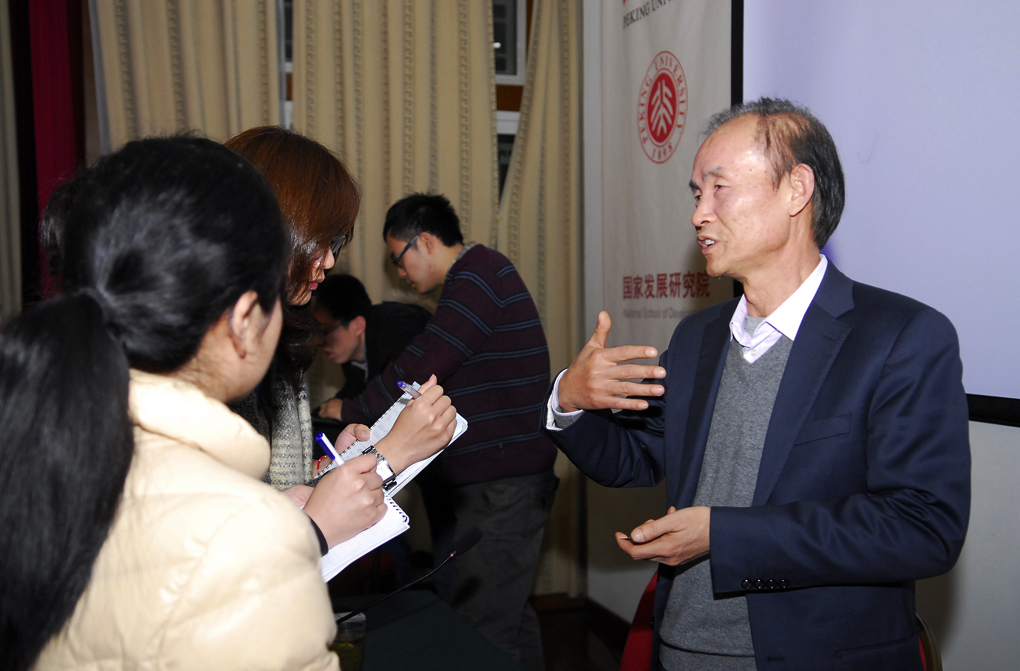

The 32nd conference of CMRC China Economic Observer was held successfully in the National School of Development (NSD) at Peking University on the afternoon of Mar 2nd, 2013. Professor Lu Feng and Associate Professor Xu Jianguo of NSD hosted the seminar. Based on the 31st “Lang Run Forecast”, Professor Lu Feng summarized the Q1 economic forecast of 28 institutions as “moderate rebound of economy and prudent policy for stability”.

The first session of the seminar was focused on the urbanization of China. Dr. Ha Jiming, Vice Chairman and Chief Investment Strategist of Investment Management Division of Goldman Sachs China, Dr. Xu Gao, Chief Macroeconomic Analyst at Everbright Securites and Professor Lu Feng of NSD took turn to give speeches. The second session of the seminar was centered on recent international and domestic macroeconomic trend. Dr. Wang Qing, Managing Director of CICC and Professor Song Guoqing, member of the Monetary Board of PBOC and Professor of NSD shared their insights and took questions from the audience.
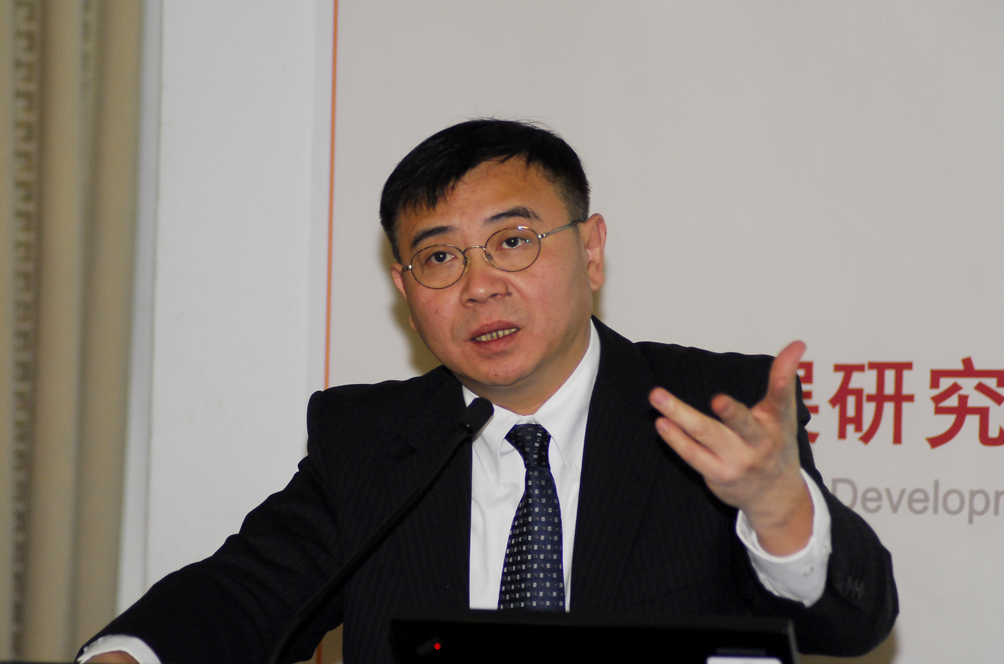
Dr. Ha talked about the general economic circumstances of US, Europe and Japan, the short-term growth and inflation trend of emerging markets, forecast on the short-term economic changes, risks and policy responses, as well as the outlook of China’s urbanization.
The global economy is likely to outperform last year. In particular, merging economies will grow faster than last year. The US economic growth is likely to remain the same as last year while the Euro Zone economy may continue to decline, but at a lower rate than last year. The Japanese economic growth may slow down due to the impact of the post-disaster reconstruction, and its expansionary monetary policy may lead to further depreciation of Japanese Yen.
The growth of emerging markets, including BRIC countries and N11, is still lower than the potential rate. Therefore, further growth will not necessarily add to inflation pressure, particularly for China. Although the leading indicators of China have declined this month, it still signals an upward economic trend. Apart from overheated investment and precipitous rise of housing prices, the risk of inflation is also a major concern. Inflation pressure comes from rising labor costs and potential pressure of imported inflation as many countries are implementing quantitative easing policy.
Urbanization is a potential growth driver promoted by the government. Dr. Ha’s research shows that the causality between urbanization and economic growth is a two way street.

Dr. Xu pointed out two disputes on the issue of urbanization at the very beginning of his speech. First, there is not yet a consensus on whether urbanization is the cause of economic growth or whether economic growth is the cause of urbanization. Second, there is dispute on the differences between the so called new urbanization and the traditional urbanization in terms of definition and results. Dr. Xu shared his view on the two disputes from the perspective of demographic structure.
Empirical analysis has shown that the urbanization process of China during the past three decade since the reform and opening up is highly consistent with the urbanization experience of many other countries in five aspects including economic growth, the weight of non-agricultural sector in GDP, the weight of non-agricultural sector employment in total employment, the weight of large city residents in the total population as well as aging. However, we cannot jump to conclusions that China’s urbanization will continue to accelerate going forward.
As to how to make sure China stays on track of the “new” urbanization, Dr. Xu proposed three prerequisites: First, cities, especially second and third tier cities, should enhance infrastructure to provide accommodating living environment and supporting facilities for rural population and the elderly in particular. Second, the household registration system (or Hukou system) should be reformed to guarantee that rural population can have equal access to medical and healthcare service. Third, the rural land system should be reformed to make sure that people who move from the rural areas to the cities can exchange their land for other forms of social insurance, so as to get rid of the constraint from land.
At last, Dr. Xu emphasized that the government only has a quite limited period of time to take actions and whether the policies can be adjusted effectively depend on how brave the decision makers are.
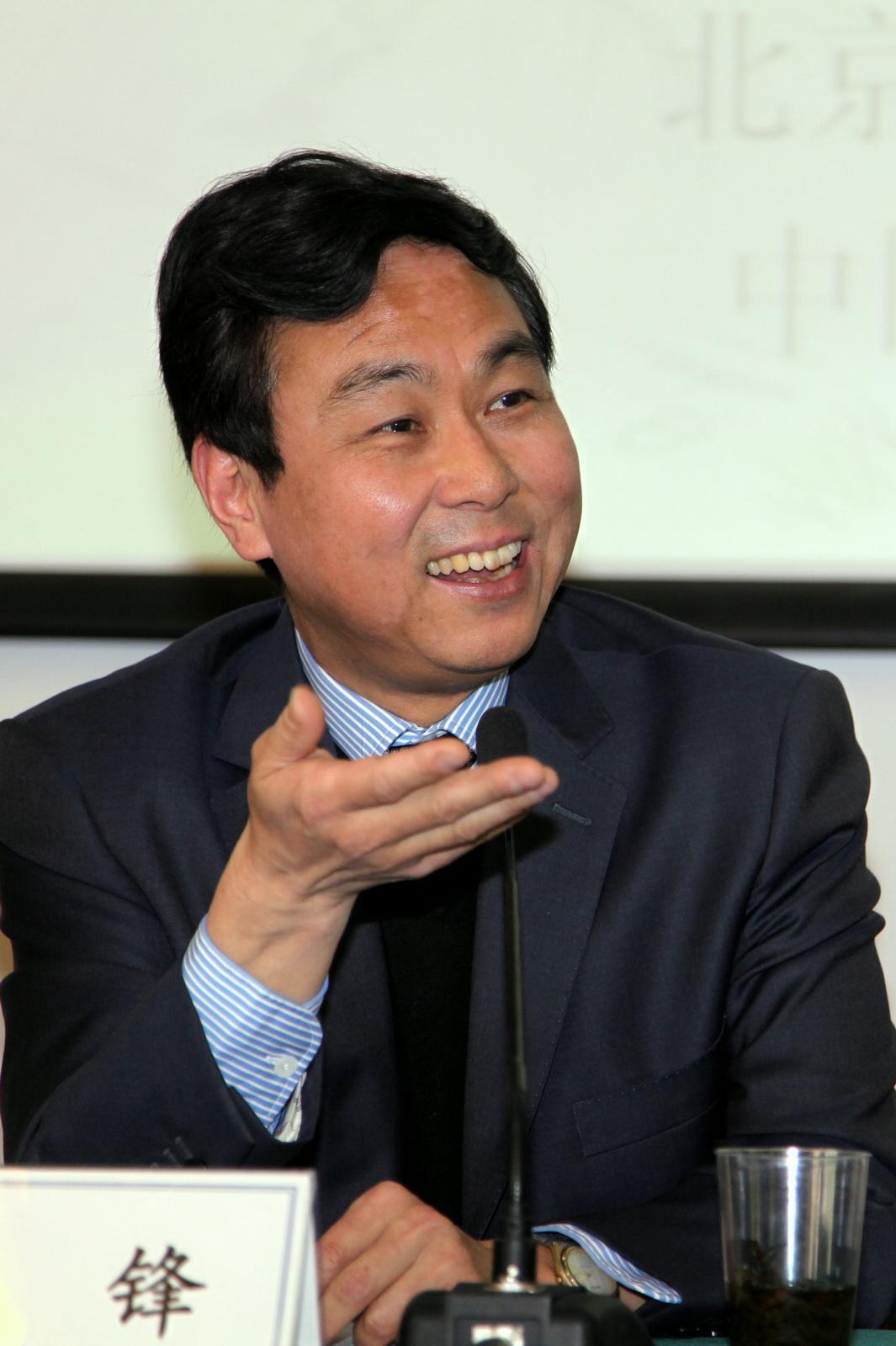
Since the reform and opening up, China has accelerated its urbanization process, with the weight of labor force in the agricultural sector dropping from around 70% at the beginning of the reform to ~35% at present. Meanwhile, the output of major agricultural products has surged and the productivity of the agricultural sector has embraced continuous improvement, making this period revolutionary in the thousands of years of agriculture history in China. Having effectively guaranteed food security for China with a population of over one billion, the agricultural revolution is also one of the preconditions of the urbanization and structural adjustment of China as a big country.
The root sources of the agricultural revolution in contemporary China are three fold. Firstly, “good policy” and “hard working people”. We have reformed the inappropriate system of organization under the planned economy, established a household-based land contract system and set up a micro organizational structure in the rural area which is consistent with the rules and features of the agricultural economy. We have also deregulated price control and permitted and promoted the birth and development of the market for agricultural products. Besides, we have reduced and ultimately eliminated agricultural tax on farmers, increased fiscal spending on agriculture and paid more attention to rural education to develop the labor sources in the agricultural sector. The market-oriented agricultural reform policies, Chinese people’s diligence and fast learning ability and the enhanced human capital accumulated through practice are the preconditions for the continuous improvement in productivity in the agricultural sector.
Secondly, scientific and technological progress and increase of input in the agricultural sector. Thirdly, an open environment which boosts agricultural productivity by leveraging the comparative advantage. In recent decade, the trade deficit of China in the agricultural sector has been enlarging very fast, exceeding USD 60 billion in 2012. However, from the perspectives of enhancing efficiency and supporting structural adjustment, to open the market and leverage the comparative advantage have great significant to the agricultural revolution.
Going forward, the agriculture sector of China is faced with many challenges in its growth. First is the environmental pressure due to increasing modern input. Second is challenge in food safety. Third is the aging problem of rural labor.
Confronted with the challenges including the reduction and aging of rural labor and escalating environmental pressure, China has to continue institutional innovation to tap the growth potential of the agricultural sector, and further leverage scientific and technological progress and increase in modern input to improve productivity, so as to complete China’s agricultural revolution ultimately.
WANG Qing: The “New Normality” of China’s Economy

Dr. Wang Qing analyzed the “past tense” of the Chinese economy starting from savings in China, proposed a “new normality” of China’s economy by taking into consideration the demographic change in China, analyzed the features of the developed economies in terms of the leverage ratio and interest rate, and pointed out the challenges that China would face going forward.
The Chinese economy has experienced profound changes in recent years. In particular, the demographic structure has changed significantly which has given rise to a “new normality” of the Chinese economy. The turning point in demographic structure induced by the family planning policy has appeared. As a result, the saving ratio has stopped rising or even has started to decline. The decline in saving ratio will slow down the accumulation of domestic tangible assets, overseas tangible assets and overseas financial assets, as well as the investment and GDP growth. Investment expansion per se will lead to rising demand and inflation pressure, while the change in supply lags behind. As a result, the economy features relatively low growth and relatively high inflation pressure, which is a very important feature of the “new normality” of the Chinese economy.
The main features of the “new normality” of the Chinese economy include slowdown in GDP growth, relatively high inflation and weakened upward pressure for asset price. Besides, another factor that leads to decline in saving ratio is that the new generation of population has taken on new consumption habits, or what we call “moonlight clan” referring to people living from paycheck to paycheck.
Due to the above-mentioned changes in the macro economy, financial suppression will no longer be necessary. With the decline in saving ratio and slowdown in investment growth, we have to improve the investment quality to realize the same rate of growth. To improve investment quality, we have to enhance the efficiency of financial intermediaries, which cannot be realized under financial suppression. Therefore, we need financial innovations, including innovations in interest rate mechanism, exchange rate mechanism, financial institutions and financial products. Financial innovation will mainly be reflected in the diversification of financial intermediaries and financial products, and the rising financial capital cost or interest rate. In recent two to three years, with the emergence of trust funds, the financial capital cost has already increased rapidly. Due to financial innovation and deregulation, the price control on the capital market will be relaxed and the opportunity cost of capital will start to present itself. This is also a “new normality” of the Chinese economy.
SONG Guoqing: Currency/GDP Ratio and Capital/GDP Ratio
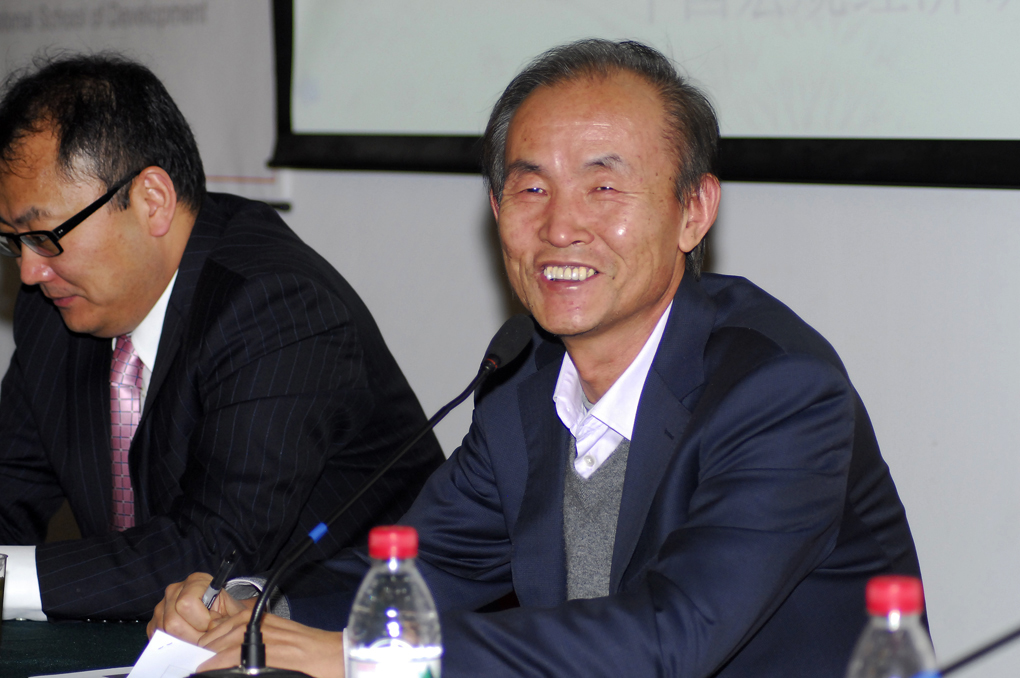
Professor Song Guoqing illustrated the middle and short-term economic volatility and long-term trend from the aspect of currency/GDP ratio and capital/GDP ratio. Currency/GDP ratio refers to the ratio of currency to nominal GDP where currency is generally measured by M2 and some other factors, while capital/GDP ratio refers to the ratio of capital deposit to GDP.
After a slight decline from 2003 to 2009, the M2/GDP ratio has started to rise again recently, which attracted extensive attention and triggered heated discussions on whether the government has issued too much currency. The ratio of M2 at year-end to nominal GDP of the year can be used as an indicator to show whether there is too much currency issued. Since the GDP of the year is constant at the end of the year, the surge currency supply at the year-end may indeed lead to a rise of this ratio. However, under this circumstance, the ratio of M2 to the nominal GDP of the following year will not necessarily rise because surge in currency supply may boost the real economic activities in the following period of time. For example, if the currency supply growth is 5% higher than usual and the nominal GDP growth of the following year is 8%, then the ratio of M2 to the nominal GDP of the following year will decline.
Inversely, the ratio of GDP to the year-end M2 is the velocity of currency. During economic downturn or deflation, the velocity of currency declines. During inflation, the velocity of currency rises. Besides, in times of inflation, the leverage ratio of companies will decrease. Therefore, we can see a combination of inflation, low leverage ratio and low currency/GDP ratio. During the currency depreciation under the rule of the Kuomintang, the currency/GDP ratio must be very low, as people must be anxious to trade cash for goods and the velocity of currency must be very fast.
The average annual GDP growth from 1978 to 2011 was 9.9% and the average annual growth of fixed asset formation adjusted by the price indices of investment in fixed assets was 11.8%, leading to a significant rise in the capital/GDP ratio. If we calculate the capital deposit (at the year-end) of 1978 based on a capital/GDP ratio of 2.1, and calculate the capital based on the fixed asset formation adjusted by the price indices of investment in fixed assets and a geometric depreciation rate of 5.0%, we can estimate the capital/GDP ratio of China from 1978 to 2012. The estimate shows that the capital/GDP ratio of China in 2012 is 3.03, higher than the long-term average ratio of ~2% in developed economies. To further forecast the change in capital/GDP ratio going forward, even the investment rate declines at the maximum rate as per estimation (i.e. dropping to 34% by 2030), or the growth of fixed asset formation drops to a very low level of 2.6% by 2030, the capital/GDP ratio will still rise to around 3.5 by 2030 before it becomes relatively stable. Therefore, the rise in capital/GDP ratio is not a short-term but a long-term phenomenon.
(Translated by Yuan Yuan)
